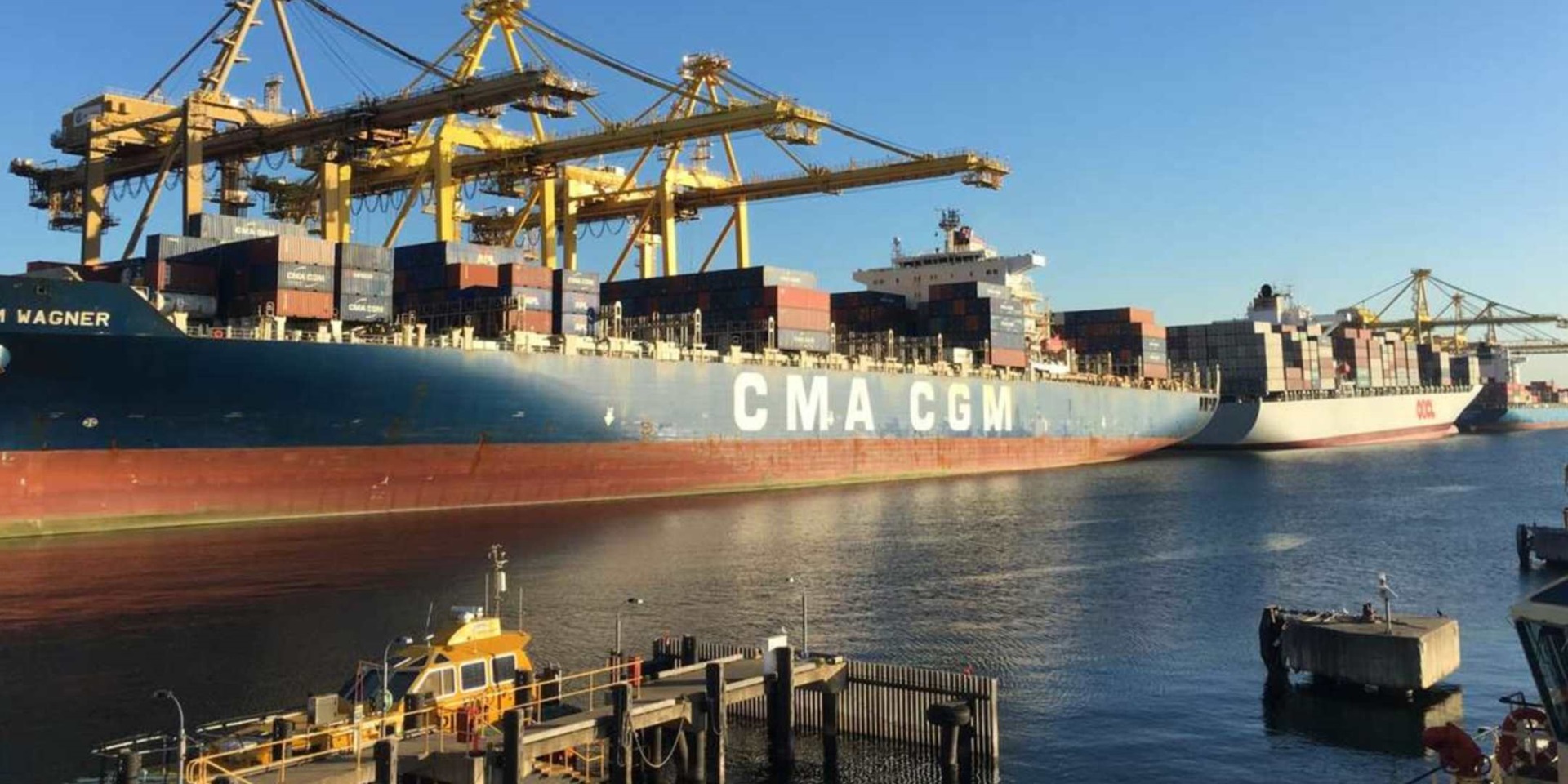

UTS Micro-CSI on site at the Australian National Maritime Museum. Image: Andrew Frolows, 2016 / ANMM.
The UTS Micro-CSI, on site at the Australian National Maritime Museum during National Science Week
This year marks the 60th anniversary of the ‘invention’ of the shipping container. As a cornerstone of the global economy, the humble steel box has revolutionised the way we live in profound ways. From the food on our plates to our clothes and mobile phones, there are very few items today that don’t travel to us by sea.
Containers of one form or another had been in use for many decades, but when an entrepreneurial trucking magnate named Malcom McLean proved the economic viability of large-scale intermodal container shipping during the 1950s, the seed was sown for the container revolution.

Break bulk cargo before the arrival of the container, c1930. Image: Samuel J Hood Studio, Sydney / ANMM Collection 00035166.
McLean’s converted oil tanker, the Ideal X, sailed from Newark (New Jersey) to Houston (Texas) on 26 April 1956 with a load of 58 custom-made 33-feet (10-metre) containers. It was a prototype for a whole new mode of shipping, but one that took more than a decade to take hold. Putting boxes on ships was just one part of the equation.
Over time, other factors paved the way for the global uptake of the box: the development of new technologies for loading and unloading boxes, the international standardisation of containers and the evolution of container ship design. From just 58 containers in 1956, today’s largest container ships carry more than 18,000 containers, measured in Twenty Foot Equivalent Units, or TEU.

CMA CGM Wagner unloads some of its 5,782 containers at Port Botany. Image: Mary-Elizabeth Andrews, 2016 / ANMM.
But despite the importance of containerisation for the development of the world economy, few people give the ‘box’ itself much thought. There are a few stand-out exceptions. New trends in container architecture, from large-scale projects like Christchurch’s post-earthquake shopping centre to tiny off-the-grid homes, capture the imagination and fuel social media feeds.

The museum kiosk in a 10-foot (3-metre) container alongside the Micro-CSI. Image: Andrew Frolows, 2016 / ANMM.

UTS Micro-CSI on site at the Australian National Maritime Museum. Image: Andrew Frolows, 2016 / ANMM.
One of these innovative container conversions is currently on display at the Australian National Maritime Museum as part of National Science Week. The University of Technology Sydney (UTS) Microbial Cell Sorting and Imaging laboratory, or Micro-CSI, has been described as a ‘lab-in-a-box’, and it is just that. The Micro-CSI is a converted 20-foot (6-metre) shipping container, which serves as a fully self-contained mobile laboratory for Australian marine researchers aboard the oceangoing Marine National Facility, RV Investigator. It is the first of its kind in Australia and brings together precision scientific equipment, an ‘inside the box’ transport solution, and a touch of design flair in the form of graphic decals by Lisa Roberts and An Marosszeky.
Led by Dr Martina Doblin from the Plant Functional Biology and Climate Change Cluster at UTS, a team of researchers from several Australian universities made the first voyage with the Micro-CSI last June, studying the temperature tolerance, diversity and activity of ocean microbial communities. Making up 50 to 90 per cent of the total ocean biomass, microbes are the most abundant and evolutionary diverse organisms in the biosphere. Understanding how these base elements of the food chain respond to environmental change is therefore of crucial importance.

Ferris wheel diatom, photomicrograph of a marine diatom (microscopic plant). Image: Martina A Doblin, © 2002.
The key advantage of the containerised lab is that it allows researchers to conduct oceanographic research in situ. In the case of microbial analysis, this is the difference between studying cryopreserved dead samples several weeks down the track in a shore-based lab and actually seeing how living cells behave under different circumstances. One can only imagine what Malcom McLean would make of the ‘lab-in-a-box’, but it is the kind of innovation that his dogged pursuit of containerisation has made possible.

